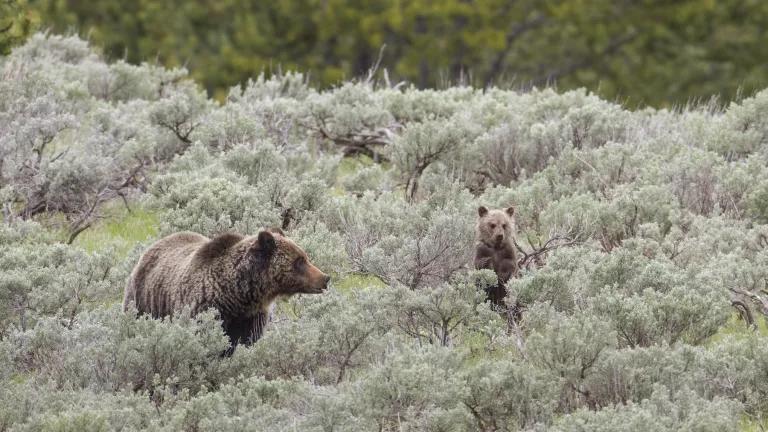Bristol Bay Crossroad: National Treasure or the Pebble Mine

Army Corps of Engineers unreasonably accelerates permit process despite requests from Bristol Bay for more time, stable project plan, and missing information about reckless mine proposed for headwaters of world’s greatest wild salmon fishery.
The fate of the Pebble Mine—a massive copper and gold mine proposed for the headwaters of the 40,000-square mile Bristol Bay watershed in southwest Alaska—may be the most consequential land use decision in North America today, pitting an essentially eternal supply of food against an essentially eternal supply of poison. In the wake of this week’s disaster at Vale SA’s Feijoa mine in Brazil—where a containment breach and massive mining waste spill have left 60 dead so far, with an estimated 300 still missing—the stakes could not be clearer.
Every year, the Bristol Bay wild salmon fishery generates between 30 million and 60 million fish, with this past summer’s run setting a record of 62 million. And every year it generates revenue of $1.5 billion and jobs for 14,000 people. It is the “Fort Knox” of salmon on Earth—the source of 50 percent of the world’s sockeye salmon—and the sustainable economic engine of southwest Alaska, fueled by both commercial fishing and recreation. It sustains the people, communities, and wildlife of Bristol Bay, which have subsisted on its natural bounty for millennia.
The Pebble Mine is one of the most widely opposed development projects anywhere in the world—an environmental, social, and economic pariah on a global scale—and a bad financial investment. It is “the wrong mine in the wrong place,” a reckless threat to an incomparable salmon ecosystem deemed a “national treasure” by the Obama Administration.
An extraordinary consensus of diverse interests around the world have condemned the project, from the Bristol Bay region to the World Conservation Congress. For example, Pebble has been:
- Opposed for decades by 80 percent of the residents in Alaska’s Bristol Bay region where it would be built and over 85 percent of stakeholders in the Bristol Bay commercial fishing industry.
- Described in 2014 by the U.S. Environmental Protection Agency, after years of peer-reviewed scientific study, as potentially “catastrophic” in its environmental impacts.
- Dismissed “as the wrong mine in the wrong place” by a consensus of former EPA Administrators from every Republican President (except Ford) since EPA was created—Nixon, Reagan, George H. W. Bush, and George W. Bush.
- Abandoned by four of the world’s leading mining companies—Mitsubishi Corporation (2011), Anglo American (2013), Rio Tinto (2014), and First Quantum Minerals (2018).
- Denounced in 2016 by the IUCN World Conservation Congress, which voted virtually unanimously to oppose the Pebble Mine and urge the United States government to deny permits.
- Opposed by 60 jewelry companies around the world, led by Tiffany & Co., which has concluded that it poses a “dire threat to the remarkable Bristol Bay ecosystem, and the world’s most productive salmon fishery it sustains,” and, last year, that “there are certain places where mining should simply never occur. Alaska’s Bristol Bay is one such place.”
- Condemned in 2017 as a “value-destroying boondoggle” by New York-based investment firm Kerrisdale Capital, which, based on a thorough financial analysis, concluded that the “Pebble project is doomed: politically impaired and commercially futile.”
- Rejected in 2013 and 2018 by trustees for several of the largest pension funds in the country—CalPERS, CalSTRS, NYPERS, and NYCERS.
- Repudiated by a 65% majority of Alaskan voters in a 2014 statewide initiative that protects the region’s salmon from destructive projects like Pebble.
- Attacked again in January 2019 by Bristol Bay leaders, rejecting Pebble’s claim of growing support within the region.

Following the election of Donald Trump, Northern Dynasty Minerals—a small, underfunded Vancouver-based exploration company that has no other assets, no mining partners, and only minimal funding—was thrown a life-line by the Trump Administration. In May 2017, after a one-hour, closed-door meeting with the mining company’s CEO, then-EPA Administrator Scott Pruitt agreed to abandon restrictions that EPA, based on an extensive, twice-peer reviewed scientific risk assessment, was poised to impose under the federal Clean Water Act.
Now federal CWA section 404 permitting for the Pebble Mine is underway, with the Army Corps of Engineers shepherding this deeply flawed project through a truncated, superficial process in record time—toward an outcome that, based on the Corps’ handling thus far, appears pre-ordained. The Army Corps of Engineers has:
- Adopted a recklessly aggressive permitting timeline—from first publishing its Notice of Intent to prepare an Environmental Impact Statement (EIS) in March 2018 to a final permitting decision in early 2020—a timeline wholly inappropriate to a project of this scale, complexity, impact, and controversy.
- Expedited Pebble’s permit application even though that application lacks important details and environmental baseline data essential to a meaningful analysis by the Army Corps (or understanding by the public) of the impacts of the proposed project.
- Announced a “draft scoping report” a mere 40 days into the extended 90-day scoping period - conveniently timed on the first day markets were open after Pebble shares tumbled 25%.
- Released a wholly incomplete scoping report that is functionally identical to the draft report released halfway through the comment period.
- Acknowledged through their contractor that the goal of completing permitting before the end of the Trump administration’s first term should drive the process schedule.
- Ignored economic uncertainties: The Army Corps has not required Pebble to provide either a preliminary feasibility study or any information about the economic viability of the project—the largest mine ever proposed in Alaska. Without an understanding of the economics of the project, the Army Corps and public are unable to determine whether the project is practicable, what reasonable alternatives exist, what mitigation is feasible and necessary, and whether Pebble is capable not only of operating a mining project of this scale but will be able to meet its post-closure and reclamation financial assurance obligations.
Pebble Mine is the largest mine ever proposed in Alaska. Under no circumstances should the Trump Administration, through the Army Corps and its contractor, be allowed to truncate either the timeframe or the analysis necessary for meaningful review, public participation, and sound environmental decision-making.
The Pebble Mine—pitting an essentially eternal supply of food against an essentially eternal supply of poison. Let the Army Corps of Engineers know where you stand. Take action now.




